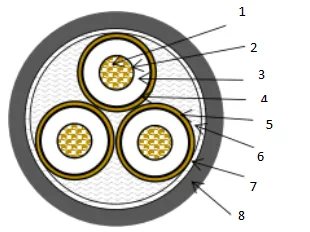វិច្ឆិកា . 26, 2024 03:29 Back to list
Flexible Rubber Couplings for Enhanced Pipeline Performance and Vibration Absorption
Understanding Flexible Rubber Joints Applications and Benefits
Flexible rubber joints, also known as rubber expansion joints, are critical components utilized in various industries for their ability to absorb vibrations and accommodate misalignments in piping systems. These joints are designed to manage the dynamic movements that occur naturally in fluid and gas transport systems. This article explores the significance, applications, and benefits of flexible rubber joints, shedding light on their indispensable role in modern engineering.
What Are Flexible Rubber Joints?
At their core, flexible rubber joints consist of a rubber body, typically reinforced with fabric or steel, which allows for flexibility while maintaining the structural integrity under varying pressure conditions. These joints can accommodate movement and absorb shocks caused by vibrations in pipelines, making them an essential component in fluid transportation systems. The inherent elasticity of the rubber material allows for thermal expansion, contraction, and other mechanical movements without causing damage to the pipes or connected machinery.
Applications of Flexible Rubber Joints
Flexible rubber joints are widely used across multiple sectors, including
1. Water and Wastewater Management In municipal water systems and wastewater treatment facilities, rubber joints help manage movement caused by pressure changes, reducing the risk of leakages at joint connections. Their ability to absorb vibrations enhances the longevity of piping infrastructure.
2. HVAC Systems In heating, ventilation, and air conditioning (HVAC) systems, flexible rubber joints are essential for connecting ducts and piping. They provide necessary flexibility to accommodate thermal expansion and contraction due to temperature changes.
3. Industrial Processes In various industrial applications, such as chemical plants, power generation, and oil and gas production, flexible rubber joints help minimize the impact of vibrations and thermal expansion on piping systems, ensuring safe and efficient operation.
4. Marine Applications The marine industry utilizes flexible rubber joints in shipbuilding and maintenance to absorb vibrations generated by engines and machinery. These joints enhance comfort on board and protect the structural integrity of vessels.
flexible rubber joint

5. Automotive Industry In the automotive field, flexible rubber joints are used in exhaust systems to reduce noise and vibration from the engine. They can also be found in suspension systems, contributing to improved ride quality and handling.
Benefits of Flexible Rubber Joints
The use of flexible rubber joints comes with numerous benefits
- Vibration Absorption One of the primary advantages of rubber joints is their ability to dampen vibrations, which can prolong the lifespan of machinery and piping systems by reducing wear and tear.
- Leak Prevention By accommodating misalignments and thermal expansions, flexible rubber joints minimize the risk of leaks, which can lead to costly downtime and repairs.
- Cost-Effectiveness The incorporation of rubber joints can significantly reduce maintenance costs in the long term. Maintaining the integrity of piping systems leads to fewer breakdowns and repairs.
- Easy Installation Flexible rubber joints are relatively easy to install compared to rigid couplings, making them a practical choice for retrofitting existing systems or installing new ones.
- Corrosion Resistance Many flexible rubber joints are resistant to various chemicals and environmental factors, making them suitable for diverse applications. This resistance translates to enhanced durability.
Conclusion
Flexible rubber joints are an essential element in modern piping systems across various industries. Their ability to absorb vibrations, prevent leaks, and accommodate thermal expansion makes them invaluable for ensuring the reliability and longevity of fluid transport systems. As industries continue to evolve and demands increase, the role of flexible rubber joints will likely expand further, solidifying their importance in engineering and infrastructure. Investing in high-quality flexible rubber joints can lead to significant cost savings and enhanced operational efficiency, making them a wise choice for any organization looking to maintain robust and efficient pipeline systems.
Share
-
Reliable Wafer Type Butterfly Valves for Every IndustryNewsJul.25,2025
-
Reliable Flow Control Begins with the Right Ball Check ValveNewsJul.25,2025
-
Precision Flow Control Starts with Quality ValvesNewsJul.25,2025
-
Industrial Flow Control ReliabilityNewsJul.25,2025
-
Engineered for Efficiency Gate Valves That Power Industrial PerformanceNewsJul.25,2025
-
Empowering Infrastructure Through Quality ManufacturingNewsJul.25,2025